Second-hand shops are a bit like slot machines. You don’t know what will turn up, but when the right thing does, there’s a big thrill. Unlike slot machines, second-hand shops are always worth a look. The risk is nothing, and the reward could be incredible.
I found this old motorist's logbook a few years back in a small town second-hand shop. There wasn’t a single mark on any page. A perfect blank book.
Bigger than a playing card but smaller than a postcard, it’s the kind of book that car nerds keep in their glovebox and fill out with fuel used, and distances travelled. That’s one nerdy way to record a trip, but I am a different kind of nerd; I filled it with drawings over late spring and early summer of 2018/19.
Even though the paper was wafer thin, it was really high quality—smooth for drawing, and surprisingly, it could handle watercolour, too. I like the way the grid and titles subtly show through the drawings.
Finds like this feel one of a kind. They give me a huge thrill and make the browsing and perusing worth it.
But I’m not just looking for things to buy; antique shop interiors are cool to look at and ideal drawing subjects. Complicated and cluttered interiors are a favourite of mine, and these shops are always packed to the rafters with all kinds of weirdness: taxidermied seagulls, ship wheels, vintage bedpans and ancient fuel cans. I’ll never buy any of these, but I’ll happily draw them.
When I wandered into Vintage at Victoria Court in Whanganui, I knew I had to draw it.
I headed to the counter and try to explain what I’m hoping to do. I admit that it’s a bit of an odd request but the owner flips through my sketchbook and enthusiastically grants permission.
“Oh yes, please! And show me at the end.”
This reaction was a huge surprise for me; most antique shop owners are scowling dudes called Graham or Grant—grumpy old men who know everything about the price of fine china and nothing about talking to people. Heather wasn’t like that. She was friendly, welcoming, and stoked to have me there.
I made my way to the back room and sat down. Slowly, carefully, thing by thing, I work my way across the page. The tables are loaded with old books, bottles, toy cars, and playing cards. Quite a few of the objects on the floor are a total mystery to me. That doesn’t matter; draw a shape, then the next shape and then the one after that. Soon enough, you’ll have a drawing that looks like something.
I try to balance myself, taking the time to go slow enough that the drawing looks good but fast enough that I don’t outstay my welcome and inconvenience customers.
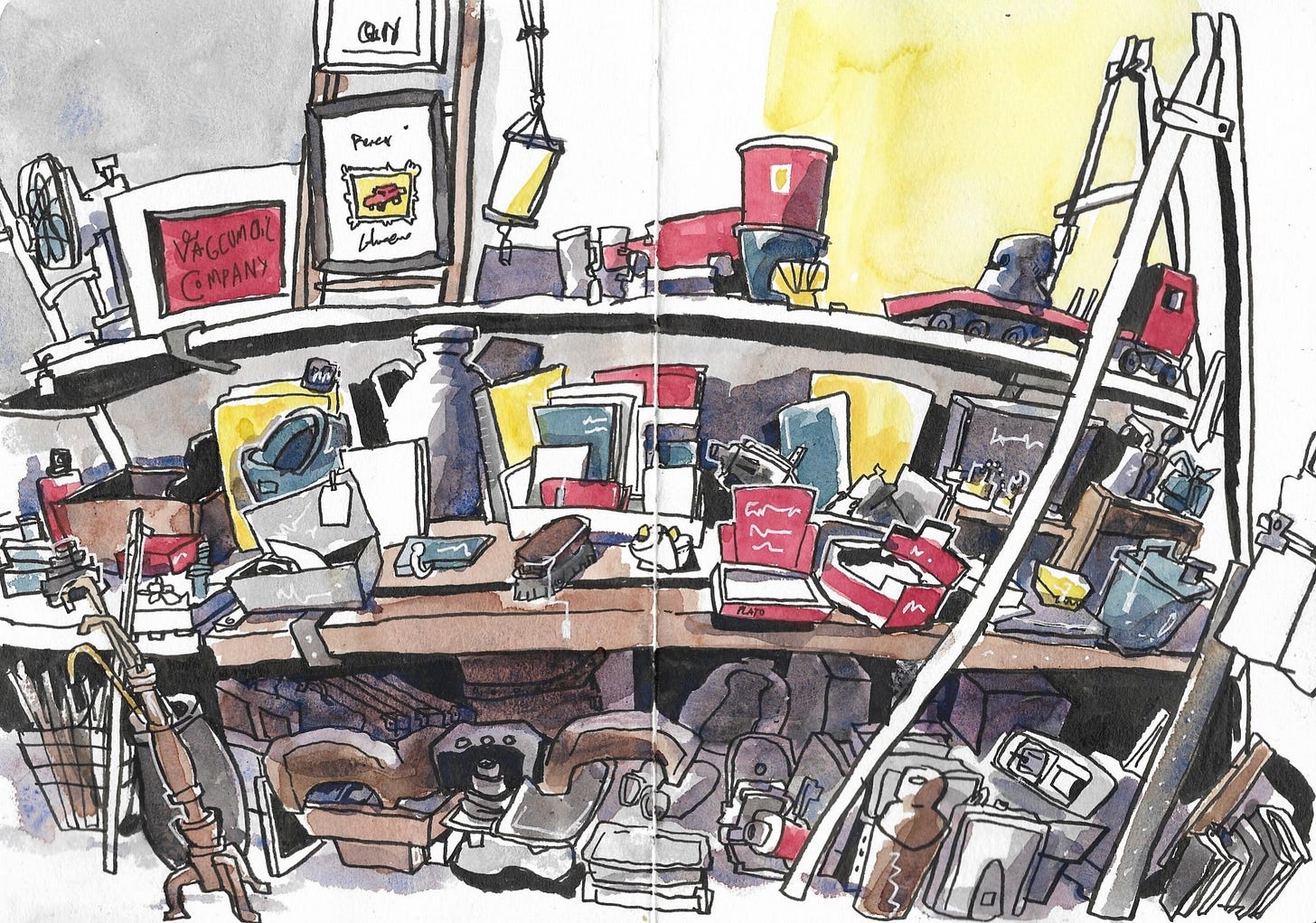
When I’d done the linework, I headed to the counter and showed Heather. She was amazed that anyone would bother sitting there looking at all the stuff, but really pleased that I had spent the time there. I asked if she had any blank books. You never know what will turn up, and owners seem to hold a map of shop inventory in their mind.
”I think so,” she vanished into the back room where I was drawing before. She returns with this:
I couldn’t believe it. Another motorist’s record book, almost identical to the one I found a few years ago.
This red book has the same vintage car print on the front and that same thin, smooth, high-quality paper. It’s not exactly like the other one: it’s red for a start, but the cover is slightly puffier, and the interior pages measure petrol and oil in gallons and pints rather than litres. The books are cousins rather than twins, but I like that. It’s another one-of-a-kind1.
Looking back at my drawing, I can spot the book in a box on the table. It’s right in the middle, but I didn’t register it during the drawing phase— it was just a shape. Now I feel that this little red book is the star of the show.
Heather refused to take any payment and insisted I take the book. I’m happy, but honestly not that surprised. Positive experiences like this one have become more and more frequent the more I draw in a little book. A sketchbook is a free pass that opens all kinds of doors. Sketchbooks are wholesome; I doubt my interactions would have been the same if I had taken a bunch of phone photos.
The sketchbook habit started as a way to record my life, but it turned into something that changed my life; you can’t observe what’s going on without altering it. Looking carefully and finding things to draw leads to meeting interesting and generous people like Heather.
Since I got that red book, I’ve wanted to use it for a trip—car logbooks are meant to record journeys. With no trip planned, I don’t know where that little book will take me or what might fill its pages. One thing’s for sure, though: it’ll open some doors.
I can help open the door to drawing for you:
Sketchbook club
💻📖✏️Paid subscribers get to join Sketchbook Club, an online meetup where I share a new way to draw, and then we get busy filling our pages. The next session is on Sunday, December 22nd, at 8 pm NZ time. It would be great to see you there.
Online course - Bold lines, Clear colours.
💻🎨🖋️I’m stoked to offer this in-depth online course, where I’ll be teaching my approach to pen and watercolour. You’ll learn a practical, systematic approach that works even for the most complex scenes2, get direct feedback from me on all your work, and have a heap of fun.
Like second-hand shop interiors





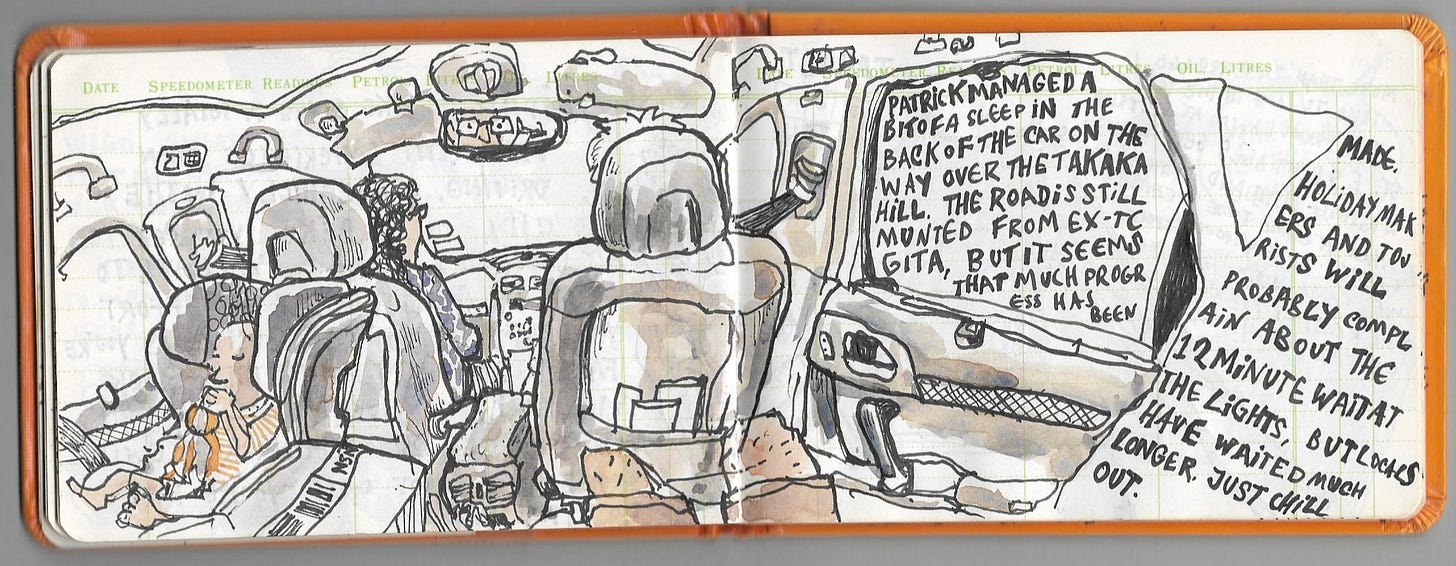

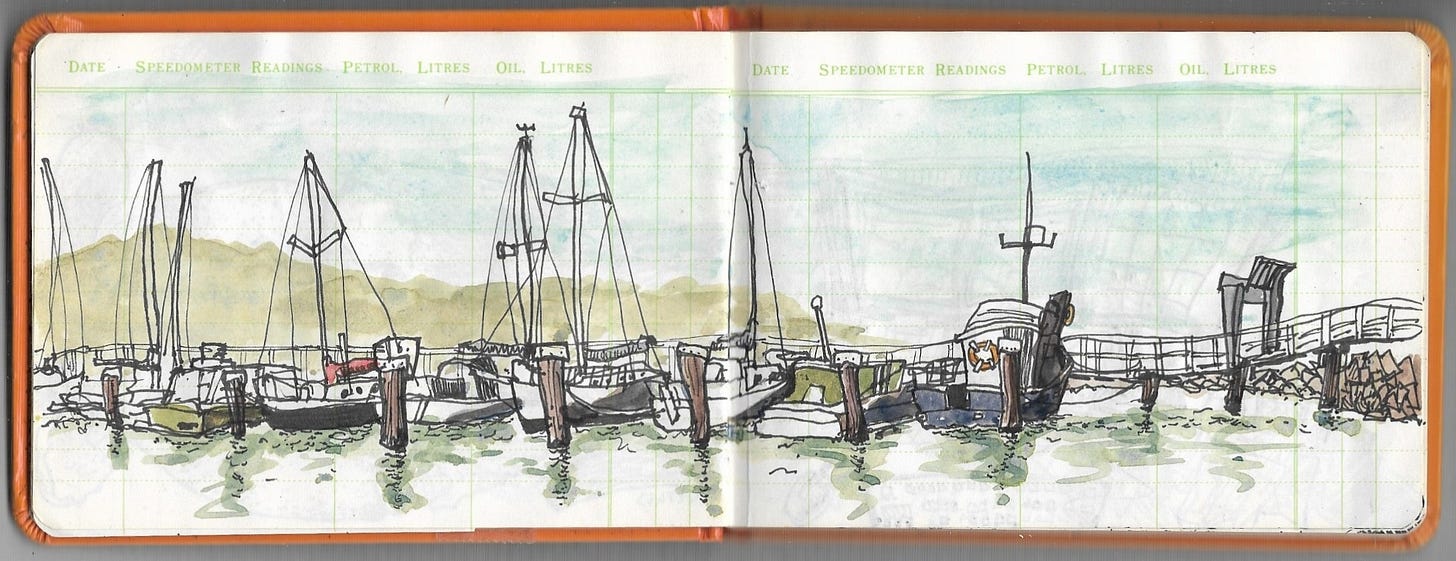

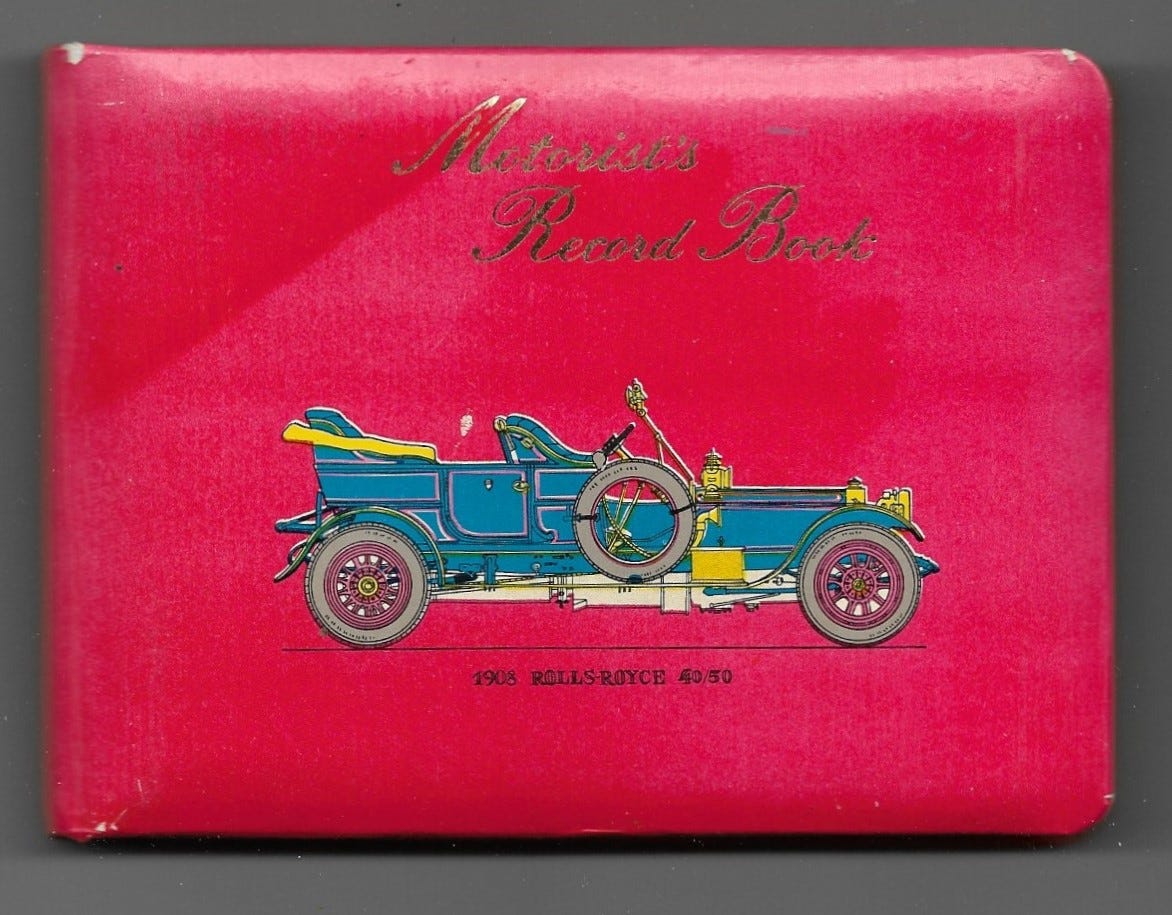
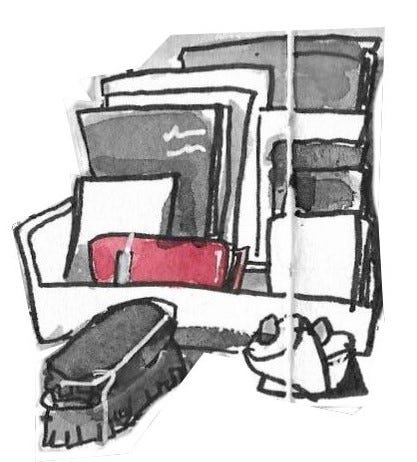
aah , this brought back memories. My dad used to ( might still? I should ask him!) keep those books in the car and meticulous record mileage, servicing, every time he filled up petrol...all of that!
A great story and excellent art, as always.